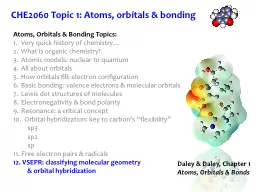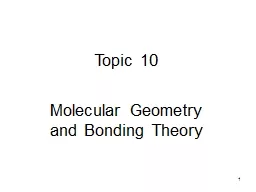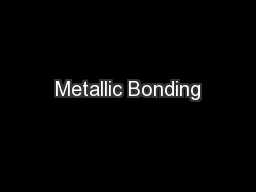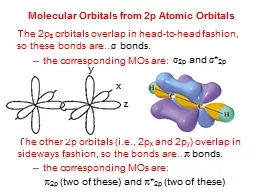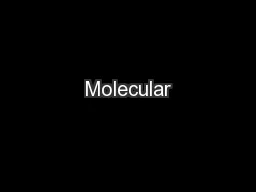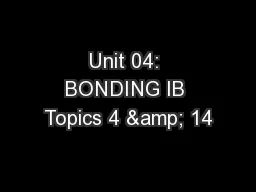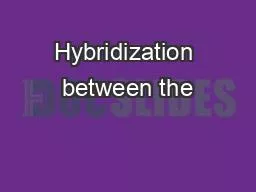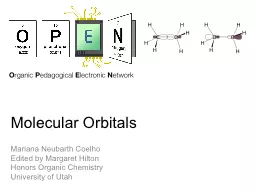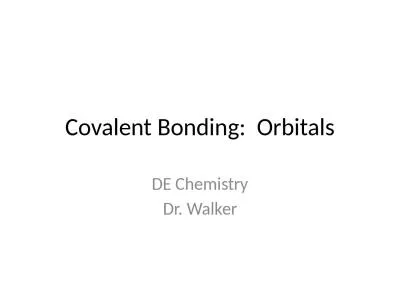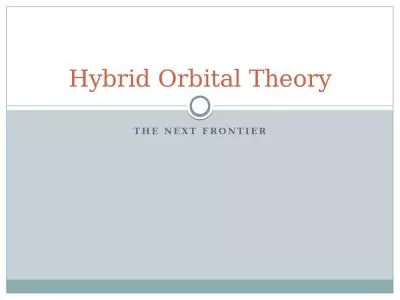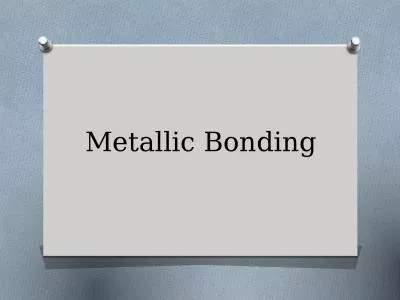PPT-CHE2060 Topic 1: Atoms, orbitals & bonding
Author : celsa-spraggs | Published Date : 2017-10-10
Atoms Orbitals amp Bonding Topics Very quick history of chemistry What is organic chemistry Atomic models nuclear to quantum All about orbitals How orbitals fill
Presentation Embed Code
Download Presentation
Download Presentation The PPT/PDF document "CHE2060 Topic 1: Atoms, orbitals & b..." is the property of its rightful owner. Permission is granted to download and print the materials on this website for personal, non-commercial use only, and to display it on your personal computer provided you do not modify the materials and that you retain all copyright notices contained in the materials. By downloading content from our website, you accept the terms of this agreement.
CHE2060 Topic 1: Atoms, orbitals & bonding: Transcript
Download Rules Of Document
"CHE2060 Topic 1: Atoms, orbitals & bonding"The content belongs to its owner. You may download and print it for personal use, without modification, and keep all copyright notices. By downloading, you agree to these terms.
Related Documents

